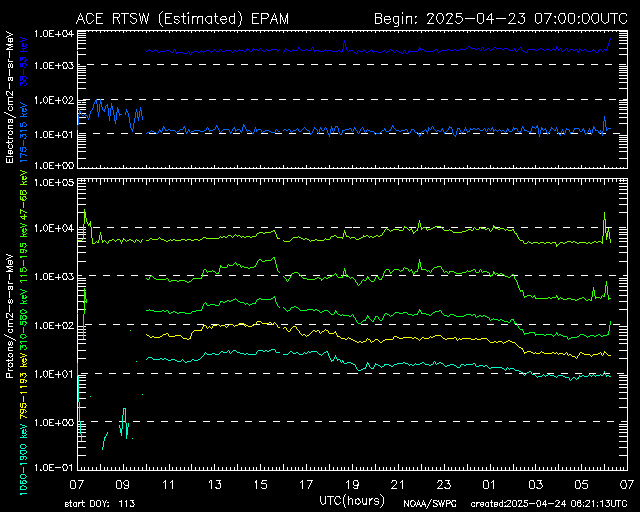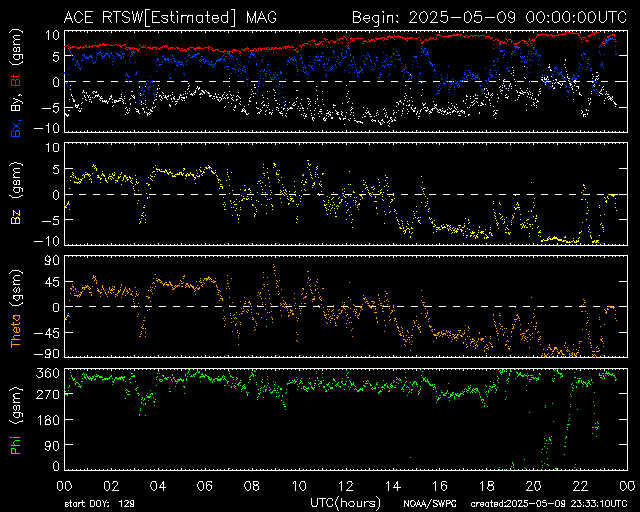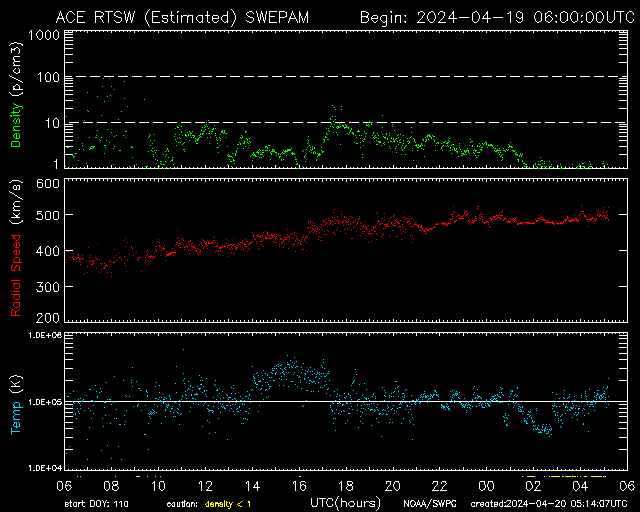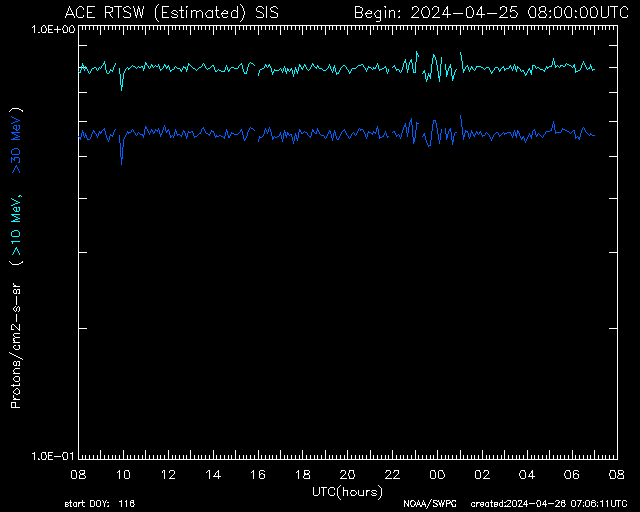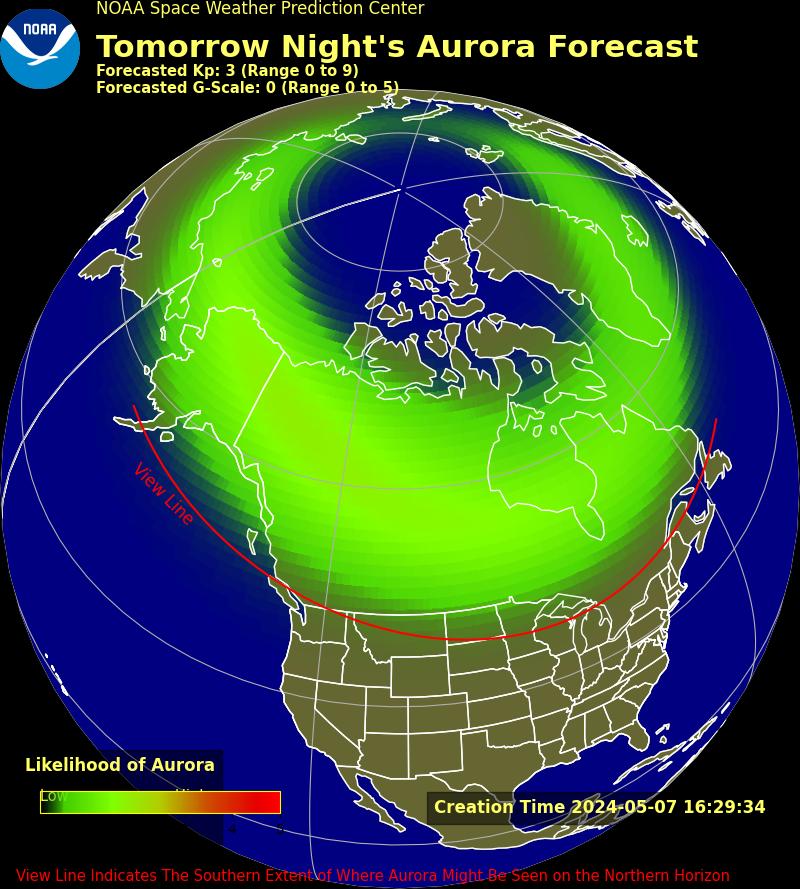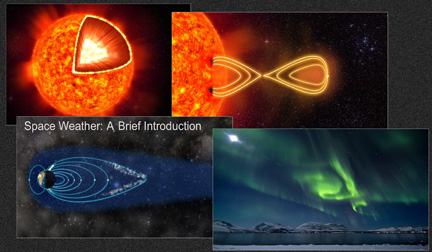Product: 3-Day Forecast
- Issued: 2026 Jan 05 1230 UTC
Prepared by the U.S. Dept. of Commerce, NOAA, Space Weather Prediction Center.
Geomagnetic Activity Observation and Forecast
The greatest observed 3 hr Kp over the past 24 hours was 4 (below NOAA Scale levels). The greatest expected 3 hr Kp for Jan 05-Jan 07 2026 is 4.33 (below NOAA Scale levels).
| Jan 05 | Jan 06 | Jan 07 | |
|---|---|---|---|
| 00-03UT | 3.00 | 2.33 | 1.67 |
| 03-06UT | 4.00 | 1.67 | 1.67 |
| 06-09UT | 4.33 | 1.67 | 1.33 |
| 09-12UT | 2.67 | 1.33 | 1.33 |
| 12-15UT | 3.33 | 1.33 | 1.33 |
| 15-18UT | 4.00 | 1.33 | 1.33 |
| 18-21UT | 2.33 | 1.00 | 1.67 |
| 21-00UT | 2.00 | 0.67 | 1.33 |
Rationale: No G1 (Minor) or greater geomagnetic storms are expected. No significant transient or recurrent solar wind features are forecast.
Solar Radiation Activity Observation and Forecast
Solar radiation, as observed by NOAA GOES-18 over the past 24 hours, was below S-scale storm level thresholds.
| Jan 05 | Jan 06 | Jan 07 | |
|---|---|---|---|
| S1 or greater | 10% | 10% | 10% |
Rationale: There is a slight chance for S1 (Minor) solar radiation storms through 07 Jan.
Radio Blackout Activity and Forecast
No radio blackouts were observed over the past 24 hours.
| Jan 05 | Jan 06 | Jan 07 | |
|---|---|---|---|
| R1-R2 | 45% | 45% | 45% |
| R3 or greater | 10% | 10% | 10% |
Rationale: There is a chance for R1-R2 (Minor-Moderate) radio blackouts, and a slight chance for isolated R3 (Strong) events over 05-07 Jan.
Space Weather Overview
Credits
Space Weather Images and Information (excluded from copyright) courtesy of:
NOAA / NWS Space Weather Prediction Center
Mauna Loa Solar Observatory (HAO/NCAR)
SOHO (ESA & NASA)
Powered by Space Weather PHP script by Mike Challis of Long Beach Weather.
Additions by Ken True of Saratoga Weather and Jerry Wilkins of Southeast Lincoln Weather.









